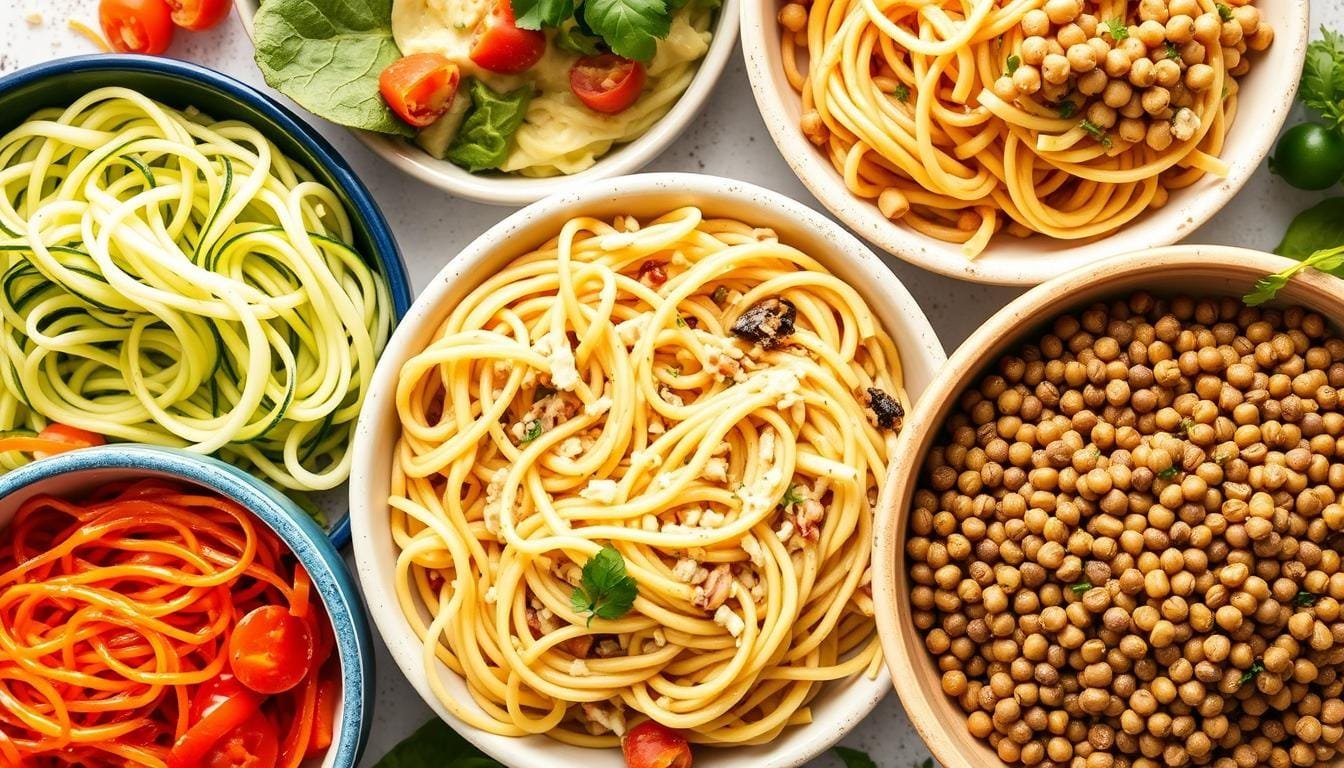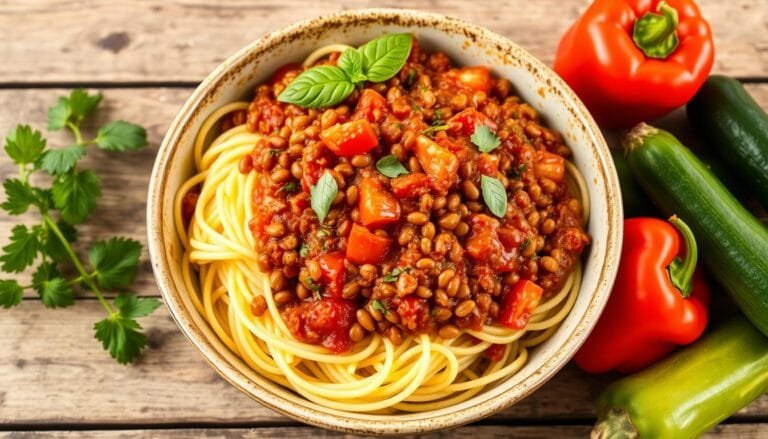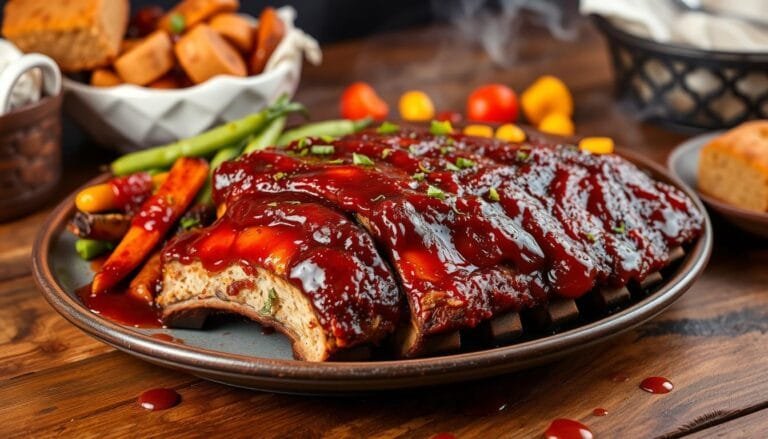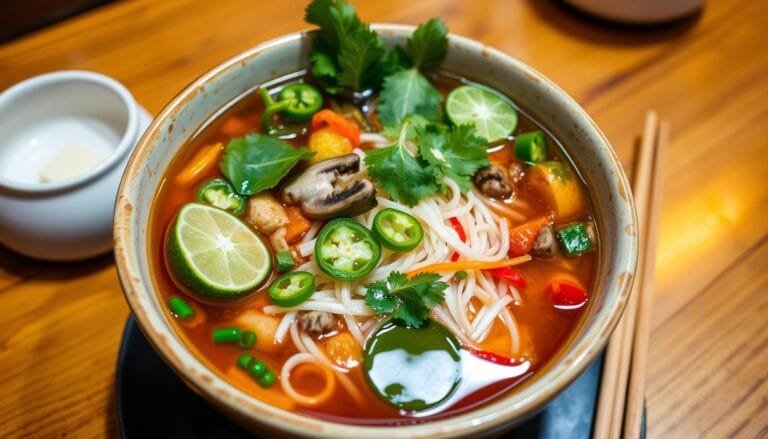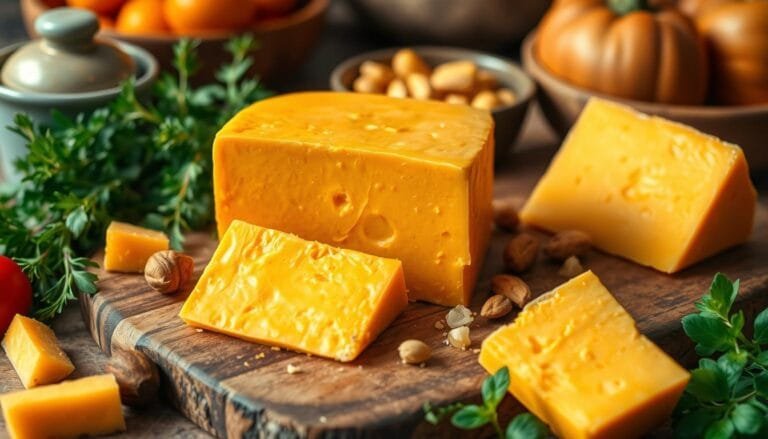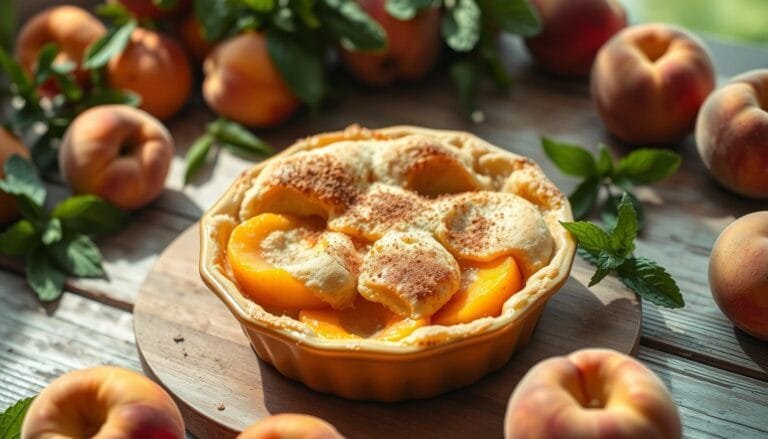I love pasta, but I’m always searching for healthier options that taste great. Luckily, plant-based pasta alternatives are becoming more popular. They offer a variety of tasty and nutritious choices, like quinoa noodles and chickpea pasta.
These alternatives are perfect if you want to eat less carbs, follow a gluten-free diet, or try new flavors. You can find everything from black bean noodles to shirataki noodles. There’s something for everyone.
Exploring healthier pasta options is interesting. It shows how plant-based pasta has a rich history and global influence. From ancient China to modern spiralized vegetable noodles, it’s a story of tradition and nutrition.
Understanding the Rise of Plant-Based Pasta Alternatives
The need for healthier pasta options is on the rise. This is because more people want to eat gluten-free and low-carb foods. The market has answered with a variety of new products that meet these needs.
The Growing Demand for Healthier Pasta Options
People are now looking for pasta that’s better for them. They want options that are high in nutrients, low in carbs, and gluten-free. Brands like Beyond Meat and Impossible Foods have shown the way with their plant-based meats. Now, pasta makers are using soy, peas, and wheat to create healthier pasta alternatives.
Benefits of Switching from Traditional Pasta
- Higher protein and fiber content
- Lower carbohydrate and calorie counts
- Gluten-free options for those with dietary restrictions
- Easier digestibility compared to traditional pasta
Current Market Trends
The market for pasta alternatives is booming. There are many options available, from veggie noodles to legume-based pastas. Wildgrain even offers a subscription for plant-based breads, pastas, and pastries. This makes it easy for health-conscious people to find what they need.
The demand for plant-based and gluten-free pasta is only getting bigger. This means the market will keep growing, giving us even more choices for a healthier diet.
The Nutritional Advantages of Vegetable-Based Noodles
More people are looking for healthier pasta options. Vegetable-based noodles like zucchini and squash are becoming popular. They are great for those who want to eat better.
These noodles are packed with nutrients. They are low in calories and fat but high in vitamins and fiber. Adding powdered veggies to pasta can sneak in a serving of veggies without changing the taste.
Vegetable noodles meet many dietary needs. They are low in carbs and gluten, making them good for weight management and health. Zucchini, eggplant, and cauliflower are just a few examples.
These noodles are also versatile. You can find pasta made from quinoa, kale, and broccoli. They add variety to your meals and make your diet more balanced.
“Whole grain noodles are just the beginning of healthier pasta options, with vegetable-based noodles providing a broader range of colors, flavors, and nutrients.”
The trend of zucchini noodles, squash noodles, and other low-calorie pasta alternatives is growing. These plant-based noodles are a great choice for improving health through diet.
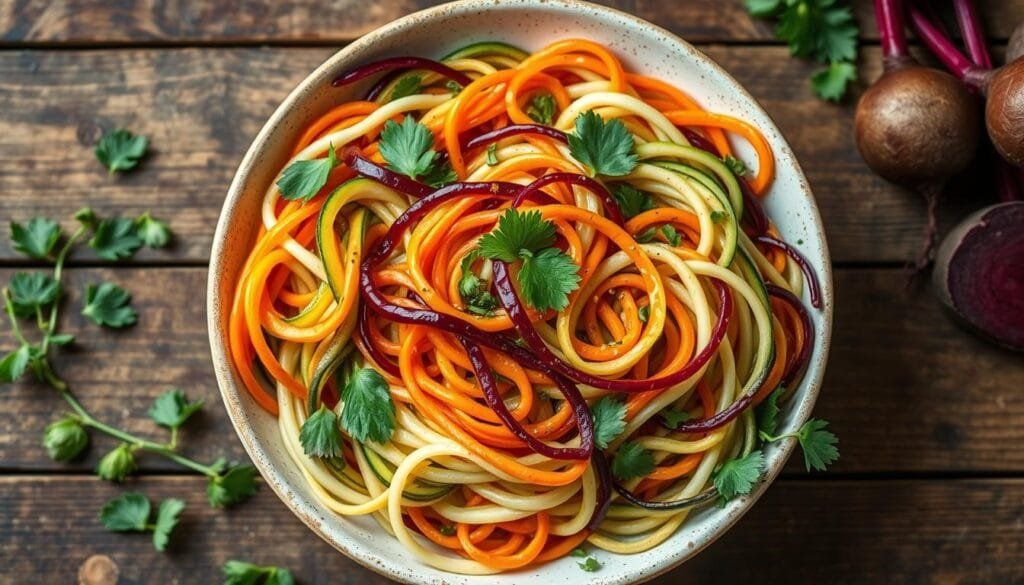
Quinoa Pasta: The Perfect Wheat Alternative
Quinoa pasta is becoming more popular as people look for healthier pasta options. It’s gluten-free and high in protein. This makes it a great choice for those who want a balanced diet.
Cooking Tips for Perfect Quinoa Pasta
Quinoa pasta needs some care to cook right, but it’s worth it. Here are some tips to help you:
- Keep an eye on the cooking time to avoid mushy or sticky pasta.
- Don’t overcook it, as quinoa noodles can get too soft and lose their texture.
- Rinse the pasta with cold water after cooking. This helps it stay firm and al dente.
Nutritional Profile and Benefits
Quinoa pasta is not only gluten-free but also high in protein. A serving has 9 grams of protein, which is a lot for a pasta. It’s a great choice for those who want more protein in their diet.
Quinoa pasta is also a complete protein. It has all nine essential amino acids. This makes it a great option for those who follow a plant-based diet or want to eat more protein.
Best Quinoa Pasta Brands
Not all quinoa pasta brands are the same. Here are some top picks:
- Now Foods Organic Quinoa Spaghetti: It’s known for its real pasta taste and texture. It’s a favorite among health fans.
- Ancient Harvest Quinoa Pasta: They offer many shapes and flavors. This brand is known for its quality and consistency.
- Trader Joe’s Organic Quinoa Pasta: It’s affordable and tasty. It’s a favorite for many families.
Quinoa pasta is a great choice for those looking for gluten-free, high-protein options. It adds delicious flavor and nutrition to your meals.
Chickpea Pasta: High Protein, High Fiber Option
Banza chickpea pasta is becoming a favorite for those looking for healthier pasta. Made from legume-based noodles, it has a unique nutritional profile. This makes it stand out from regular wheat-based pasta.
Banza’s classic rotini has 13 grams of high-fiber pasta per serving. This makes it very filling and satisfying. Barilla’s Protein+ rotini has 10 grams of protein, and their chickpea rotini has 11 grams. Ancient Harvest’s red-lentil rotini has 14 grams of protein, and Simple Truth Organic’s red-lentil-and-quinoa fusilli has 13 grams per serving.
Banza chickpea pasta is not just high in protein. It’s also packed with important nutrients like iron, potassium, magnesium, and phosphorus. Plus, it has a lot of fiber, with Banza’s Chickpea Cavatappi Pasta having 3 times more than regular pasta.
“Chickpea pasta is a game-changer for those seeking a healthier alternative to traditional wheat-based pasta. It offers a great source of plant-based protein and fiber, making it a nutritious choice for a satisfying meal.”
If you’re an athlete or just want to eat healthier, Banza chickpea pasta and other legume-based noodles are great. They’re a high-fiber pasta option that’s tasty and doesn’t lose its texture.
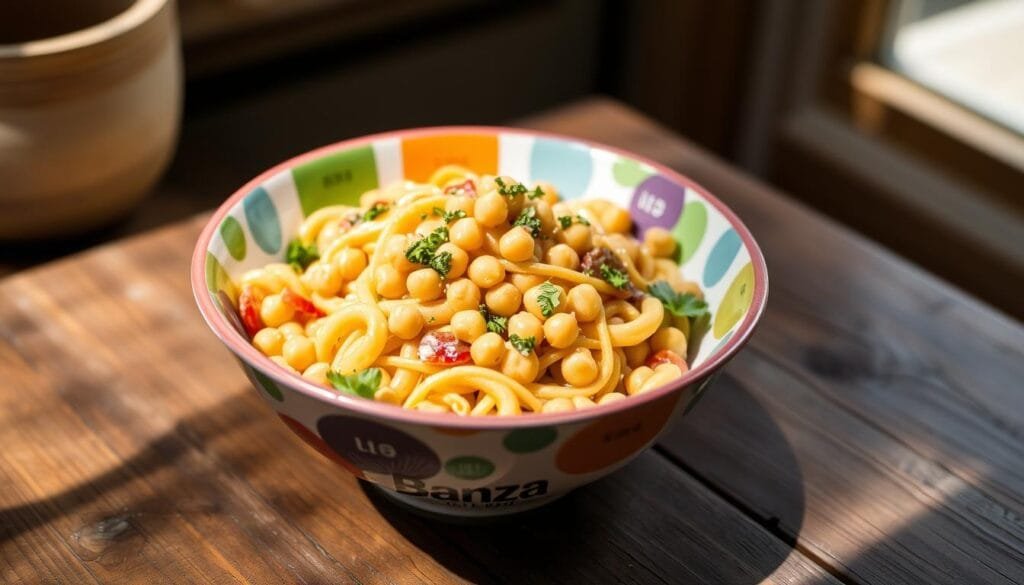
Black Bean Pasta: A Protein-Rich Alternative
Black bean pasta is becoming more popular as people look for healthier pasta options. It’s high in protein and is gluten-free. It also has a great nutritional profile, making it a top pick for those wanting a nutritious meal.
How to Cook Black Bean Pasta
Cooking black bean pasta needs a bit more care than regular pasta. Use lots of water and stir often to avoid sticking. It also soaks up sauces well, so adjust cooking times and sauce amounts as needed.
Ideal Sauce Pairings
Black bean pasta’s earthy taste goes well with many sauces. Try tomato-based or creamy sauces to see what you like best. Its ability to take on flavors makes it very versatile.
Diabetic-Friendly Properties
Black bean pasta has just 5 net carbs per serving. It’s great for those on a low-carb or diabetic-friendly diet. Its high protein and low glycemic index make it a healthy choice for meals.
“Black bean pasta is a game-changer for those looking to incorporate more plant-based, high-protein options into their diet. Its versatility and nutritional benefits make it a must-try for anyone seeking a low-carb and diabetic-friendly pasta alternative.”
Zucchini Noodles: The Low-Carb Solution
If you want to eat less carbs but love pasta, zucchini noodles are perfect. They’re made with a vegetable spiralizer. These noodles are full of nutrients and a great choice for a healthier pasta option.
Zucchini noodles are packed with vitamins A, C, K, and B6. They also have potassium and manganese. They have about 6.5 grams of carbs per 3.5 ounces. This is much less than regular pasta, which can have up to 10 times more carbs.
Zucchini noodles are very versatile. You can eat them raw, boil, sauté, or bake them. They’re great for many dishes, like creamy salads or pasta with mushroom marsala. You can even find pre-made zoodles in the frozen section of stores.
To make zucchini noodles, pat them dry to avoid sogginess. Add sauce just before serving. Don’t overcook them. A good vegetable spiralizer is essential for making your own.
Ready to try a healthier pasta option? Zucchini noodles are a great choice. They’re good for your taste buds and waistline.
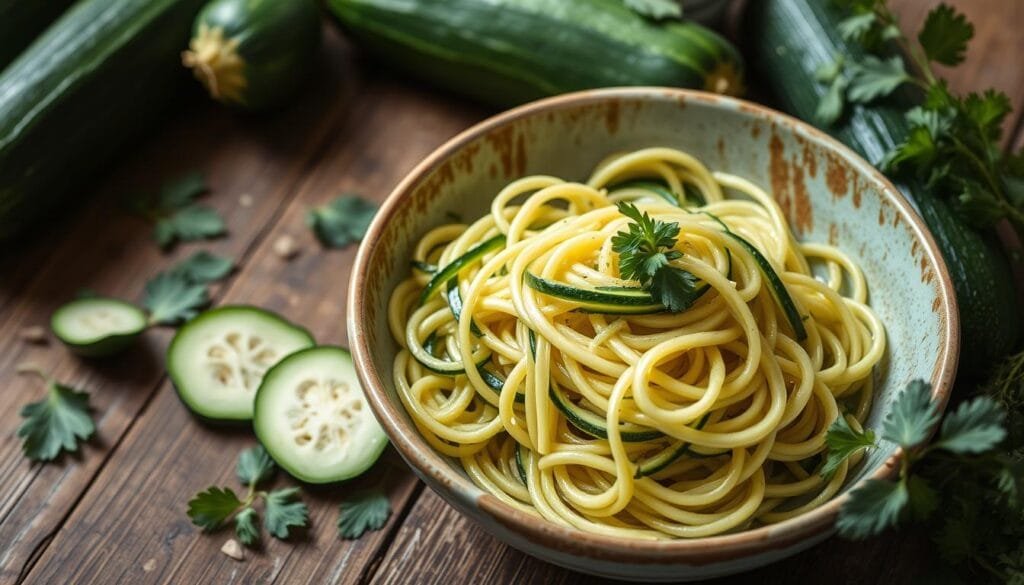
Zucchini noodles, or “zoodles,” are a low-carb, gluten-free, and keto-friendly pasta substitute. They’re made by spiralizing zucchini into long strands. With only 6.5 grams of carbs per 3.5 ounces, they’re perfect for low-carb diets.
Ali Maffucci from New Jersey introduced zoodles as a healthy pasta option. You can make zucchini noodles with various tools, including spiralizers and knives.
There are many ways to cook zucchini noodles. You can eat them raw, boil, pan-fry, bake, or air fry. Pat them dry, add sauce just before serving, and don’t overcook. They can be frozen, but they might get softer when reheated.
The recipes show how versatile zucchini noodles are. They can be simple or elaborate, with proteins and sauces. People love them for being adaptable to different diets and healthier than traditional pasta.
Hearts of Palm Pasta: A Weight Management Option
Looking for a low-calorie, low-carb pasta? Hearts of palm pasta is a great choice. It’s a plant-based pasta found at places like Trader Joe’s. It has a unique texture and a mild flavor, unlike regular pasta.
Texture and Taste Profile
Hearts of palm pasta is softer and more delicate than regular pasta. It’s described as “veggie-like” and similar to al dente when cooked. Its mild taste makes it perfect for soaking up sauces.
Nutritional Benefits
Low-calorie noodles like hearts of palm pasta are very nutritious. A serving has about 20 calories and only 2 grams of carbs. It’s also gluten-free and kosher, making it good for many diets.
While it’s great for weight management, remember to add protein and healthy fats to your meals. The fiber in this vegetable-based pasta can cause digestive issues if eaten too much.
“Hearts of palm pasta is a game-changer for those looking to cut carbs and calories without sacrificing the enjoyment of pasta dishes.”
Shirataki Noodles: Zero-Calorie Wonder
Shirataki noodles are a big deal for those watching their diet. They’re almost calorie and carb-free. They’re made from the konjac yam and are mostly water, with just 3% fiber.
This fiber can hold up to 50 times its weight in water. This makes you feel full without eating a lot of calories.
These noodles are great for losing weight. They can help you eat 23% to 47% fewer calories. They’re also good for people who are overweight or obese.
Shirataki noodles do more than help with weight loss. They can also lower bad cholesterol by 10% and non-HDL cholesterol by 7%. They also help with digestion, making it easier to go to the bathroom.
But, some people might get loose stools, bloating, or gas. Start with small amounts and slowly increase. Also, talk to your doctor if you’re taking medicine.
These noodles are easy to use in many recipes. They’re perfect for those who want a low-carb option. They’re a great calorie-free pasta choice.
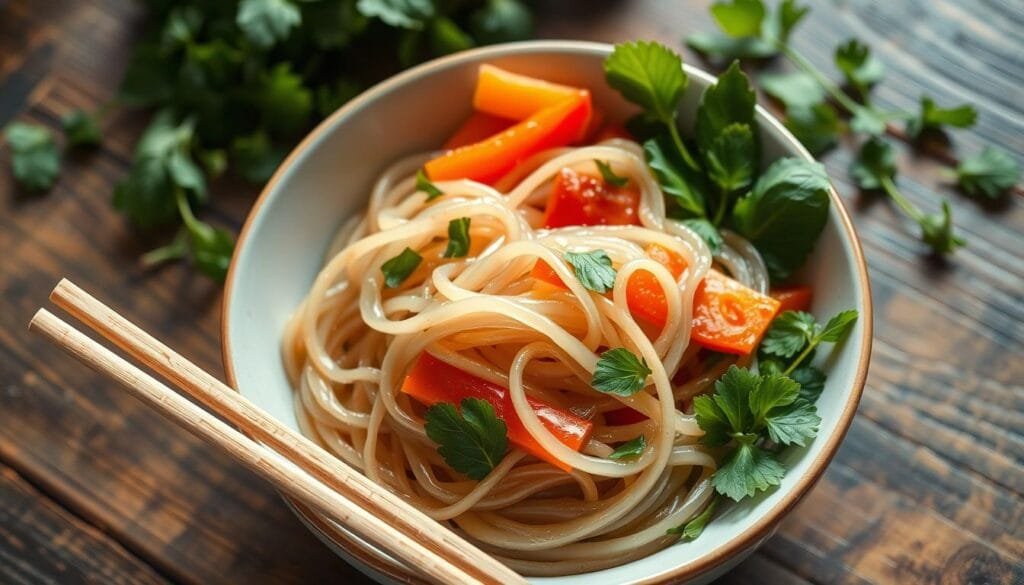
Brown Rice Pasta: Gluten-Free Goodness
Looking for a gluten-free pasta option? Brown rice pasta, like Jovial Organic Brown Rice Penne, is a great pick. It tastes great and comes in many shapes to match your cooking style.
Cooking Methods and Tips
Brown rice pasta is firmer than regular pasta. To get it just right, follow the cooking guide closely. It usually takes longer to cook than wheat pasta, so you might need to adjust the time.
To keep the pasta’s shape, don’t overcook it. Check it a minute or two before the suggested time. Keep tasting until it’s just right. Also, handle it gently to avoid it becoming mushy.
Varieties and Shapes Available
Gluten-free pasta like Jovial brown rice pasta comes in many shapes. You can find spaghetti, fusilli, macaroni, and lasagna sheets. This lets you try new recipes and dishes that fit your taste and diet.
Want a healthier pasta option or to try something new? Gluten-free pasta from Jovial brown rice pasta or other rice noodles is a smart choice. It’s nutritious and tastes great.
Plant-based Pasta Alternatives for Special Dietary Needs
Plant-based diets are becoming more popular. This means more people are looking for pasta that fits their dietary needs. Whether you’re gluten-free, vegan, or watching carbs, there’s a plant-based pasta for you.
For those with gluten issues, quinoa pasta and brown rice pasta are great. Quinoa pasta is a complete protein and rich in iron and B-vitamins. Brown rice pasta is gluten-free and comes in many shapes.
Zucchini noodles and shirataki noodles are good for low-carb diets. Zucchini is full of vitamins and fiber. Shirataki noodles have almost no calories or carbs.
Chickpea pasta and black bean pasta are great for a protein boost. Chickpea pasta is high in protein and fiber. Black bean pasta is also gluten-free and low in sugar and calories.
| Pasta Alternative | Dietary Need | Key Nutrients |
|---|---|---|
| Quinoa Pasta | Gluten-free | Complete protein, iron, B-vitamins, magnesium, fiber |
| Brown Rice Pasta | Gluten-free | Gluten-free, variety of shapes and sizes |
| Zucchini Noodles | Low-carb | Vitamins, minerals, fiber |
| Shirataki Noodles | Low-calorie, low-carb | Virtually calorie and carb-free, high in fiber |
| Chickpea Pasta | High protein, gluten-free | High in protein and fiber |
| Black Bean Pasta | High protein, gluten-free, low-sugar | High in protein, iron, calcium, fiber |
There are many plant-based pasta options out there. Whether you’re cutting down on gluten, boosting protein, or just looking for healthier noodles, you’ll find something. Plant-based noodles offer a wide range of choices for everyone.
How to Choose the Right Plant-Based Pasta for Your Needs
Choosing plant-based pasta can feel overwhelming. But, with some tips, you can pick the perfect noodle for you. It’s all about looking at nutritional content, cooking methods, taste, and texture.
If you’re watching your weight, try zucchini noodles or shirataki noodles. They’re low in calories and carbs but taste great. For more protein, go for pasta made from chickpeas, lentils, or black beans.
People with gluten issues should look for gluten-free options like quinoa or brown rice pasta. These are not only safe but also packed with fiber, vitamins, and minerals. The right pasta for you depends on your diet and taste. By considering pasta alternative guide, healthy noodle options, and nutritional comparison, you can choose wisely and enjoy a tasty, healthy meal.
